Drainage Pattern Recognition of River Network Based on Graph Convolutional Neural Network
Abstract
1. Introduction
2. Method for Spatial Pattern Recognition Method for Drainage Networks
2.1. Framework of Drainage Network Pattern Recognition
- (1)
- Constructing a sample library: Extracting vector river network data from DEM for experimental purposes.
- (2)
- Graph representation: Utilizing a binary tree structure (a specific type of graph) to construct the river network structure based on river reaches.
- (3)
- Indicator description: Selecting appropriate geometric and spatial indicators to describe the river network.
- (4)
- Pattern recognition: Building a suitable neural network classification model based on GCN and conducting classification experiments using the graph structure data obtained from the aforementioned steps.
2.2. Tree Model Construction of Drainage Network
2.3. Description Indices of Drainage Network
2.3.1. Geometric Indices
2.3.2. Spatial Indices
2.4. GCN Model for Drainage Network Pattern Recognition
3. Experiments and Results
3.1. Data Description
3.2. Drainage Network Classification Experiment
3.3. Parameter Sensitivity Test
4. Conclusions and Outlook
- (1)
- Introducing graph convolutional networks (GCNs) as a deep learning approach to tackle the pattern recognition problem of drainage networks. This method employs case-based learning, training on manually labeled cases, effectively leveraging expert experience and knowledge. It alleviates the burden of feature engineering to some extent, enhancing the intelligence- and knowledge-based aspects of drainage network pattern recognition. Compared to previous research methods, the GCN-based approach can utilize and learn the spatial and topological features of the river network, automatically extracting and updating node feature representations during the learning process, thereby improving the accuracy of pattern recognition.
- (2)
- Experimental results demonstrate that spatial features of drainage networks play an equally important role in pattern recognition tasks within GCNs and other deep learning methods. This finding provides valuable insights for future research, suggesting that further utilization of spatial features in river networks can enhance the accuracy and performance of pattern recognition.
- (3)
- The pattern recognition model based on a GCN exhibits strong learning capabilities. As the quality and quantity of different types of sample data increase, along with improvements in the description of river network features, this method is expected to further enhance recognition performance.
- (1)
- We structured the river network data based on river reaches as the fundamental units, which yielded promising results. In future studies, it is possible to construct a more geographically meaningful river network data structure by considering entire river entities as the basic units. This can be beneficial for pattern recognition and other related tasks.
- (2)
- The sample selection process in our research only considered a subset of typical river network types. In the future, it is important to expand the range of river network types studied to encompass a wider variety.
- (3)
- Understanding the influence of scale effects on the recognition of drainage networks is also an important aspect that can be further explored in future research.
- (4)
- Composite forms of drainage networks were not included in this study. In the future, these networks can be identified by delineating watershed areas into smaller drainage networks and then performing pattern recognition on them.
Author Contributions
Funding
Data Availability Statement
Conflicts of Interest
References
- Tan, X.; Wu, F.; Huang, Q.; Deng, H.Y. A Multi-criteria Decision Model for Identifying Master River and Its Application in River System Construction. Acta Geod. Cartogr. Sin. 2005, 34, 154–160. (In Chinese) [Google Scholar]
- Tan, W.; Xing, J.; Yang, S.; Yu, G.; Sun, P.; Jiang, Y. Long Term Aquatic Vegetation Dynamics in Longgan Lake Using Landsat Time Series and Their Responses to Water Level Fluctuation. Water 2020, 12, 2178. [Google Scholar] [CrossRef]
- Touya, G. River network selection based on structure and pattern recognition. In Proceedings of the 23rd International Cartographic Conference, Moscow, Russia, 4–10 August 2007. [Google Scholar]
- Strahler, A.N. Hypsometric (Area-Altitude) Analysis of Erosional Topography. Geol. Soc. Am. Bull. 1952, 63, 1117–1141. [Google Scholar] [CrossRef]
- Shreve, R.L. Statistical law of stream numbers. J. Geol. 1966, 74, 17–37. [Google Scholar] [CrossRef]
- Scheidegger, A.E. The algebra of stream-order numbers. U. S. Geol. Surv. Prof. Pap. 1965, 525, 187–189. [Google Scholar]
- Woldenberg, M.J. Spatial order in fluvial systems: Horton’s laws derived from mixed hexagonal hierarchies of drainage basin areas. Geol. Soc. Am. Bull. 1969, 80, 97–112. [Google Scholar] [CrossRef]
- Jarvis, R.S. Drainage network analysis. Prog. Phys. Geogr. 1977, 1, 271–295. [Google Scholar] [CrossRef]
- Smart, J. The analysis of drainage network composition. Earth Surf. Process. 1978, 3, 129–170. [Google Scholar] [CrossRef]
- Guo, Q.S. Analyzing the Characters of the Networks of Rivers and Structuralizing the Tree-like Network of Rivers Automatically. Surv. Mapp. Geol. Miner. Resour. 1999, 4, 5–9. (In Chinese) [Google Scholar]
- Argialas, D.; Lyon, J.; Mintzer, O. Quantitative description and classification of drainage patterns. Photogramm. Eng. Remote Sens. 1988, 54, 505–509. [Google Scholar]
- Ichoku, C.; Chorowicz, J. A numerical approach to the analysis and classification of channel network patterns. Water Resour. Res. 1994, 30, 161–174. [Google Scholar] [CrossRef]
- Snelder, T.H.; Biggs, B.J.F.; Woods, R.A. Improved eco-hydrological classification of rivers. River Res. Appl. 2005, 21, 609–628. [Google Scholar] [CrossRef]
- Du, Q.Y.; Yang, P.F.; Tan, R.C. Classification of River Networks Structure Based on Spatial Statistical Character. Geomat. Inf. Sci. Wuhan Univ 2006, 31, 419–422. (In Chinese) [Google Scholar]
- Zhang, L.; Guilbert, E. Automatic drainage pattern recognition in river networks. Int. J. Geogr. Inf. Sci. 2013, 27, 2319–2342. [Google Scholar] [CrossRef]
- Jung, K.; Shin, J.-Y.; Park, D. A new approach for river network classification based on the beta distribution of tributary junction angles. J. Hydrol. 2019, 572, 66–74. [Google Scholar] [CrossRef]
- Mejía, A.I.; Niemann, J.D. Identification and characterization of dendritic, parallel, pinnate, rectangular, and trellis networks based on deviations from planform self-similarity. J. Geophys. Res. Earth Surf. 2008, 113, F02015. [Google Scholar] [CrossRef]
- Huang, B.; Zhao, B.; Song, Y. Urban land-use mapping using a deep convolutional neural network with high spatial resolution multispectral remote sensing imagery. Remote Sens. Environ. 2018, 214, 73–86. [Google Scholar] [CrossRef]
- Feng, Y.; Thiemann, F.; Sester, M. Learning Cartographic Building Generalization with Deep Convolutional Neural Networks. ISPRS Int. J. Geo-Inf. 2019, 8, 258. [Google Scholar] [CrossRef]
- Touya, G.; Lokhat, I. Deep Learning for Enrichment of Vector Spatial Databases. ACM Trans. Spat. Algorithms Syst. 2020, 6, 1–21. [Google Scholar] [CrossRef]
- Yan, X.; Ai, T.; Yang, M.; Yin, H. A graph convolutional neural network for classification of building patterns using spatial vector data. ISPRS J. Photogramm. Remote Sens. 2019, 150, 259–273. [Google Scholar] [CrossRef]
- Donadio, C.; Brescia, M.; Riccardo, A.; Angora, G.; Veneri, M.D.; Riccio, G. A novel approach to the classification of terrestrial drainage networks based on deep learning and preliminary results on solar system bodies. Sci. Rep. 2021, 11, 5875. [Google Scholar] [CrossRef] [PubMed]
- Yu, H.; Ai, T.; Yang, M.; Huang, L.; Yuan, J. A recognition method for drainage patterns using a graph convolutional network. Int. J. Appl. Earth Obs. Geoinf. 2022, 107, 102696. [Google Scholar] [CrossRef]
- Kondolf, G.M.; Piégay, H. Tools in Fluvial Geomorphology; Wiley Blackwell: Hoboken, NJ, USA, 2016; 560p. [Google Scholar]
- Shreve, R.L. Stream lengths and basin areas in topologically random channel networks. J. Geol. 1969, 77, 397–414. [Google Scholar] [CrossRef]
- Dacey, M. Summary of magnitude properties of topologically distinct channel networks and network patterns. In Random Processes in Geology; Springer: Berlin/Heidelberg, Germany, 1976; pp. 16–38. [Google Scholar]
- Du, Q.Y. The Automatic Establishment of Structured River Network in Cartographic Database. J. Wuhan Tech. Univ. Surv. Mapp. 1988, 13, 70–77. (In Chinese) [Google Scholar]
- Wang, Z.; Müller, J.C. Line generalization based on analysis of shape characteristics. Cartogr. Geogr. Inf. Syst. 1998, 25, 3–15. [Google Scholar] [CrossRef]
- Strahler, A.N. Quantitative analysis of watershed geomorphology. Eos Trans. Am. Geophys. Union 1957, 38, 913–920. [Google Scholar] [CrossRef]
- Kipf, T.N.; Welling, M. Semi-supervised classification with graph convolutional networks. arXiv 2016, arXiv:1609.02907. [Google Scholar]
- Lee, J.; Lee, I.; Kang, J. Self-attention graph pooling. arXiv 2019, arXiv:1904.08082. [Google Scholar]
- Fey, M. 2021. Available online: https://pytorch-geometric.readthedocs.io/en/latest/ (accessed on 10 February 2021).
- Horton, R.E. Erosional development of streams and their drainage basins hydrophysical approach to quantitative morphology. Geol. Soc. Am. Bull. 1945, 56, 275–370. [Google Scholar] [CrossRef]
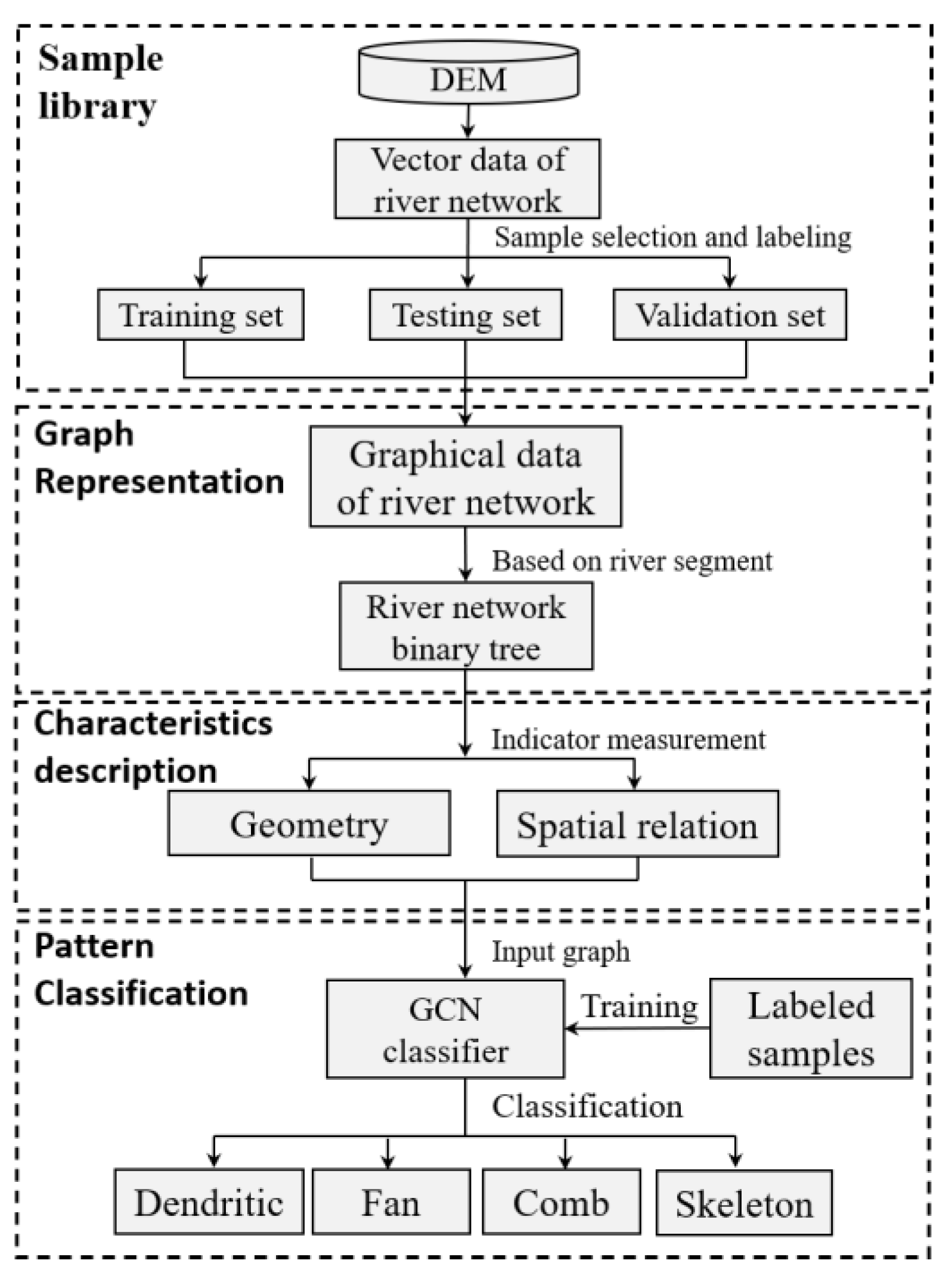
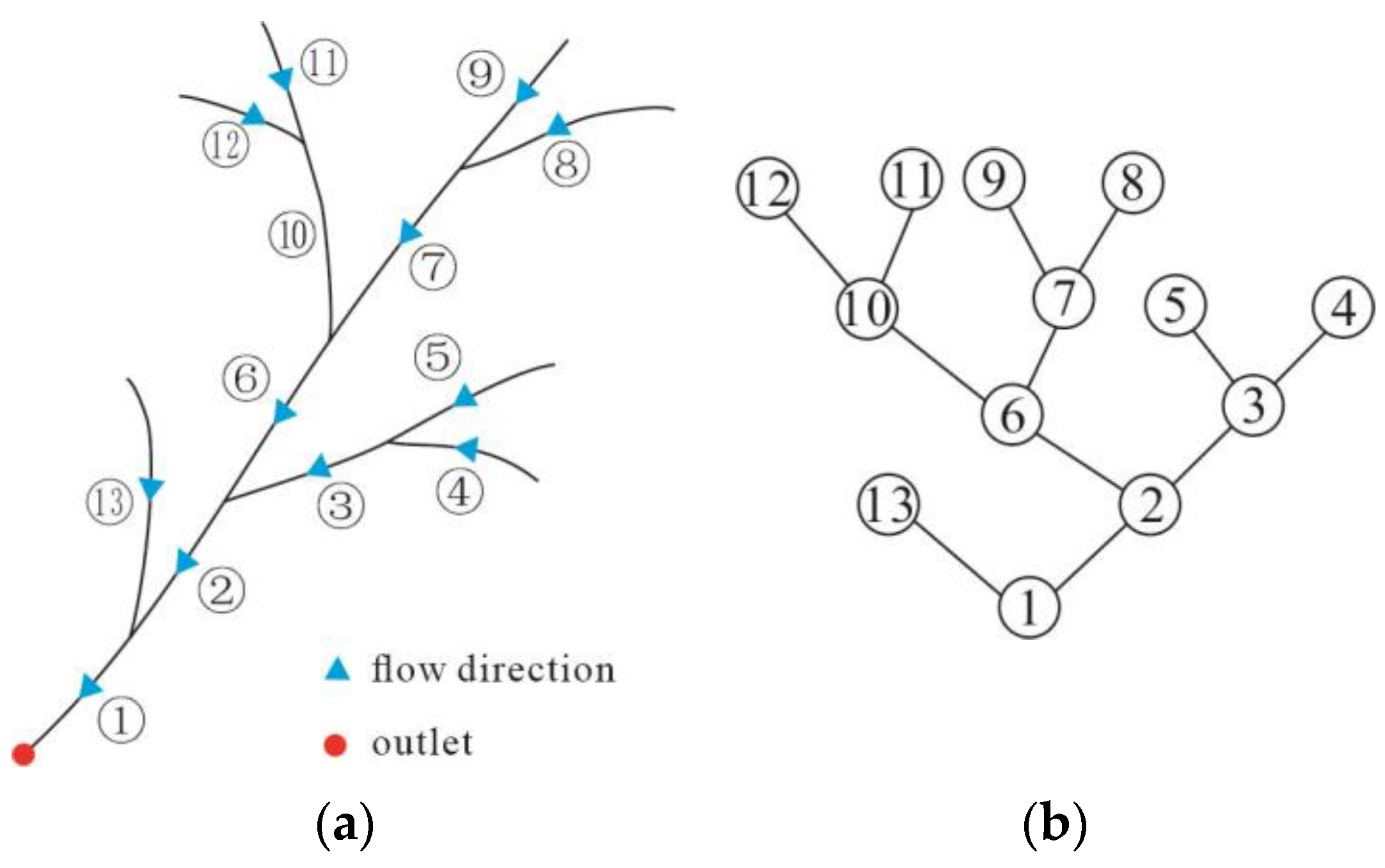
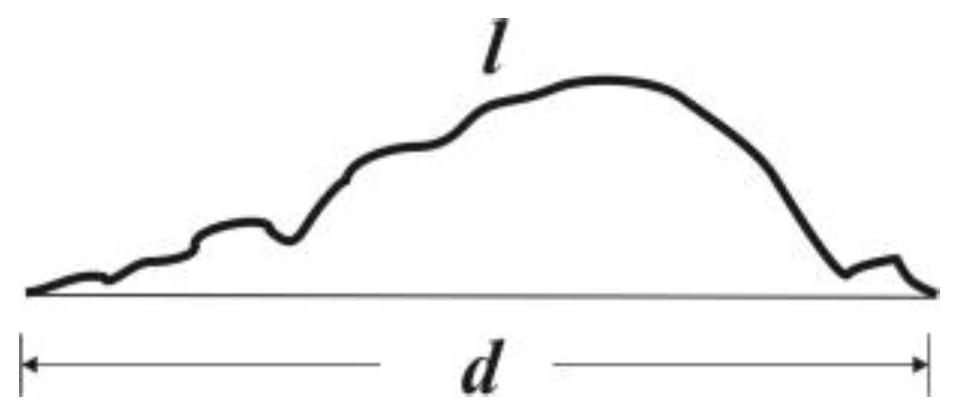
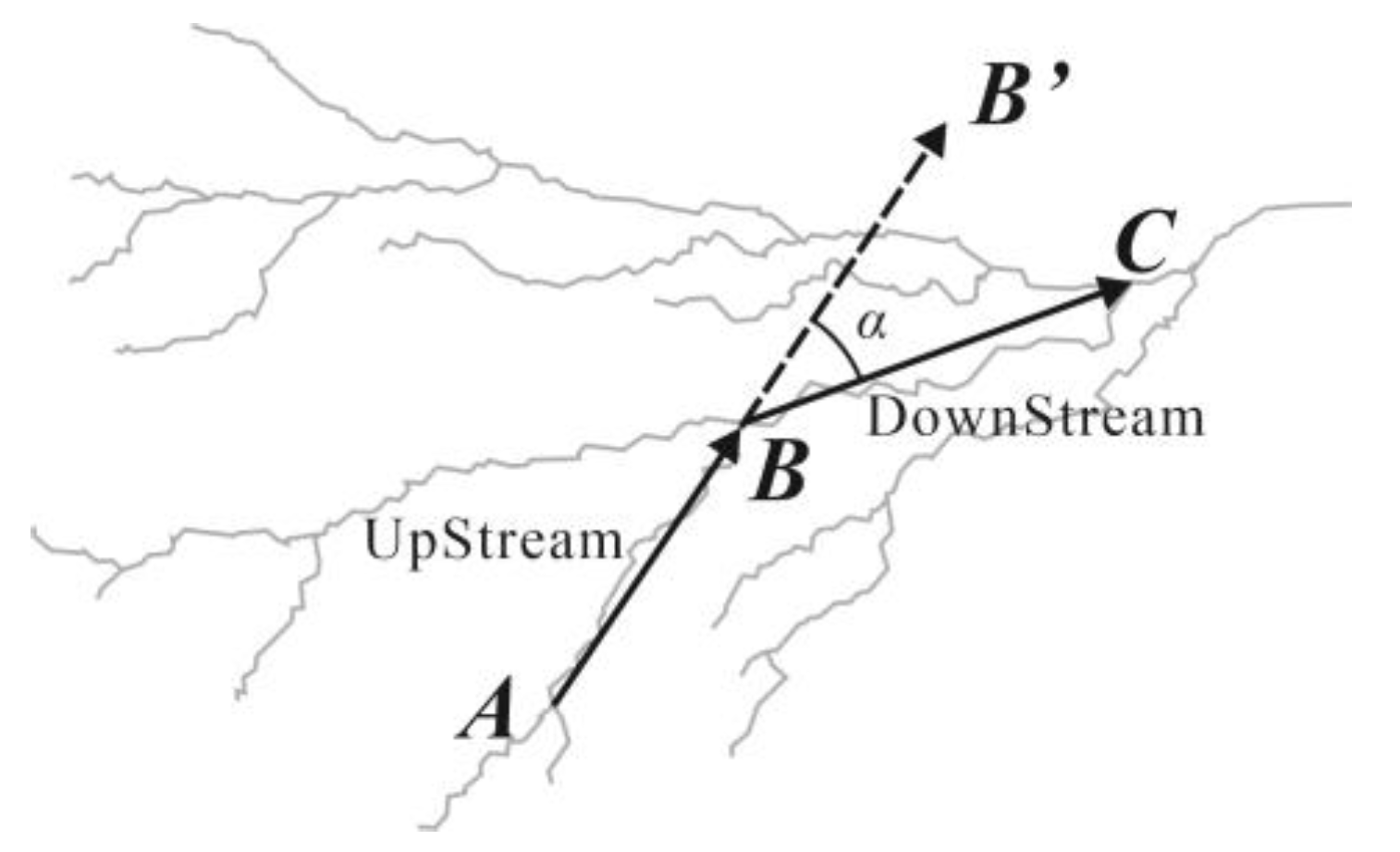
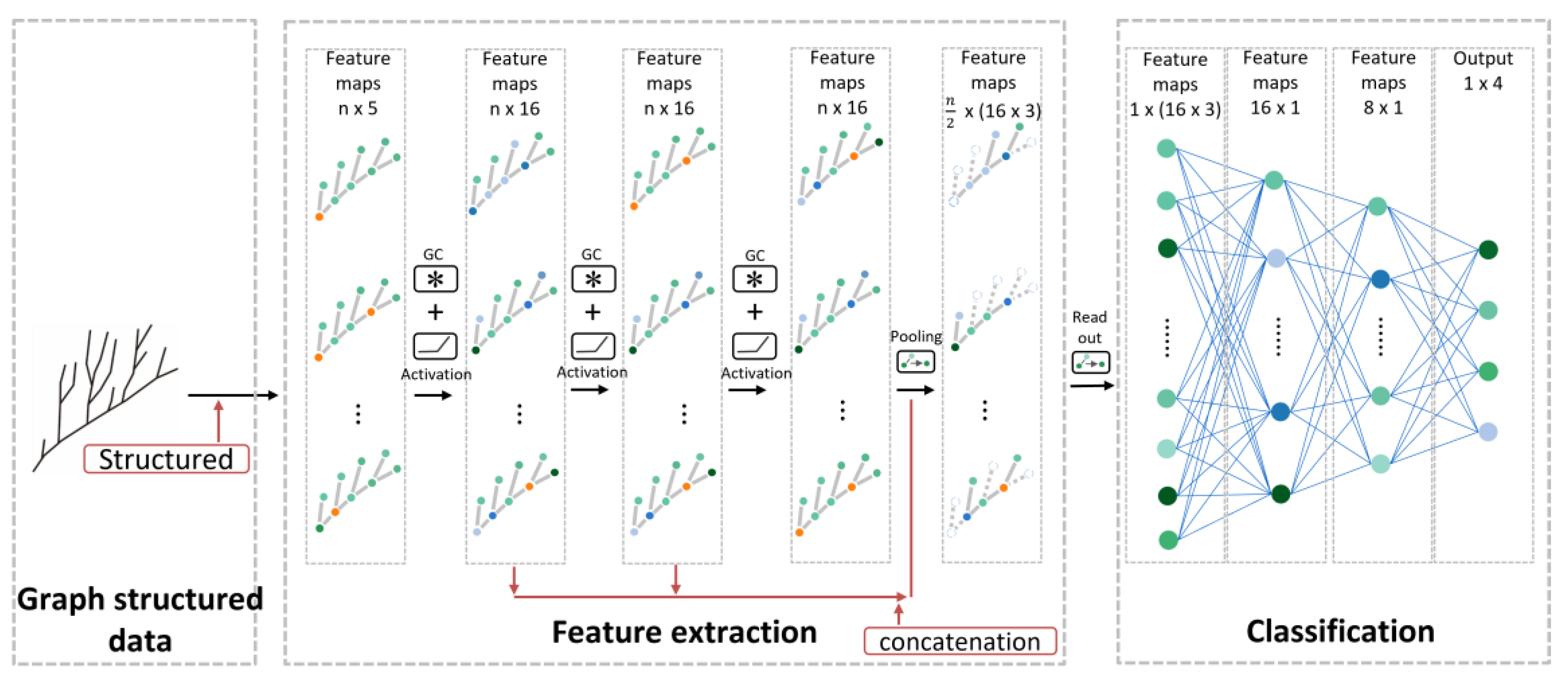
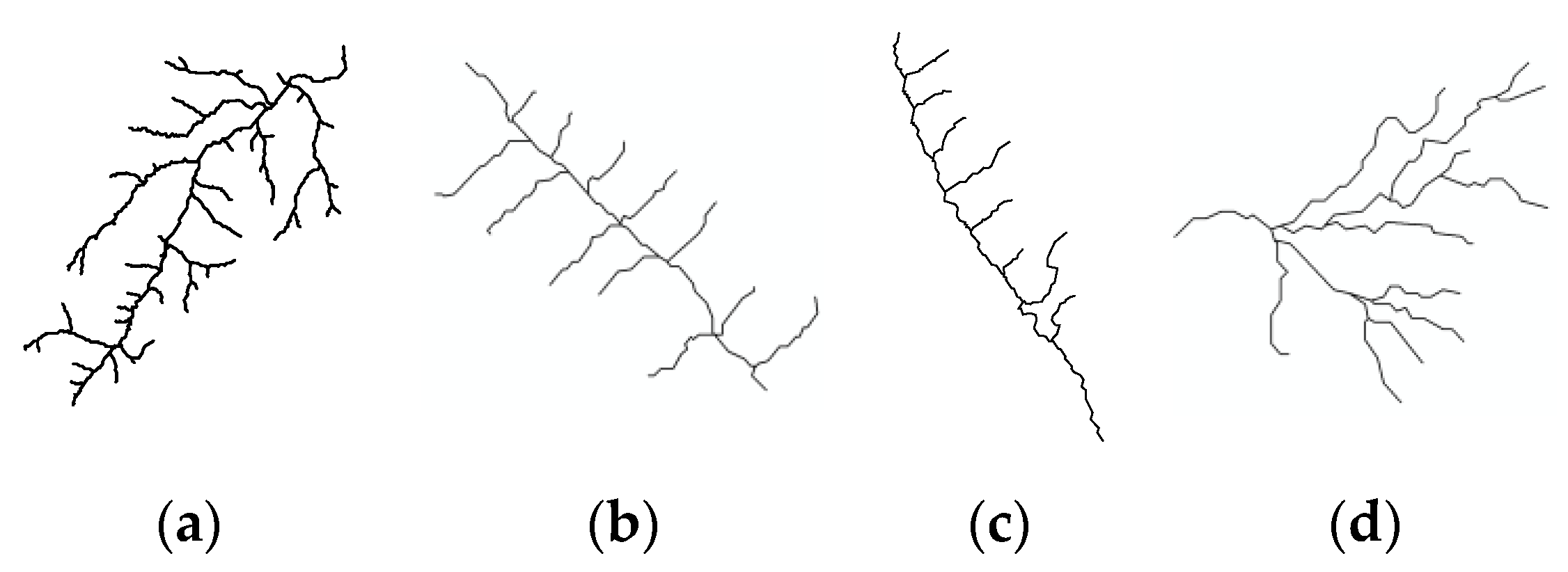
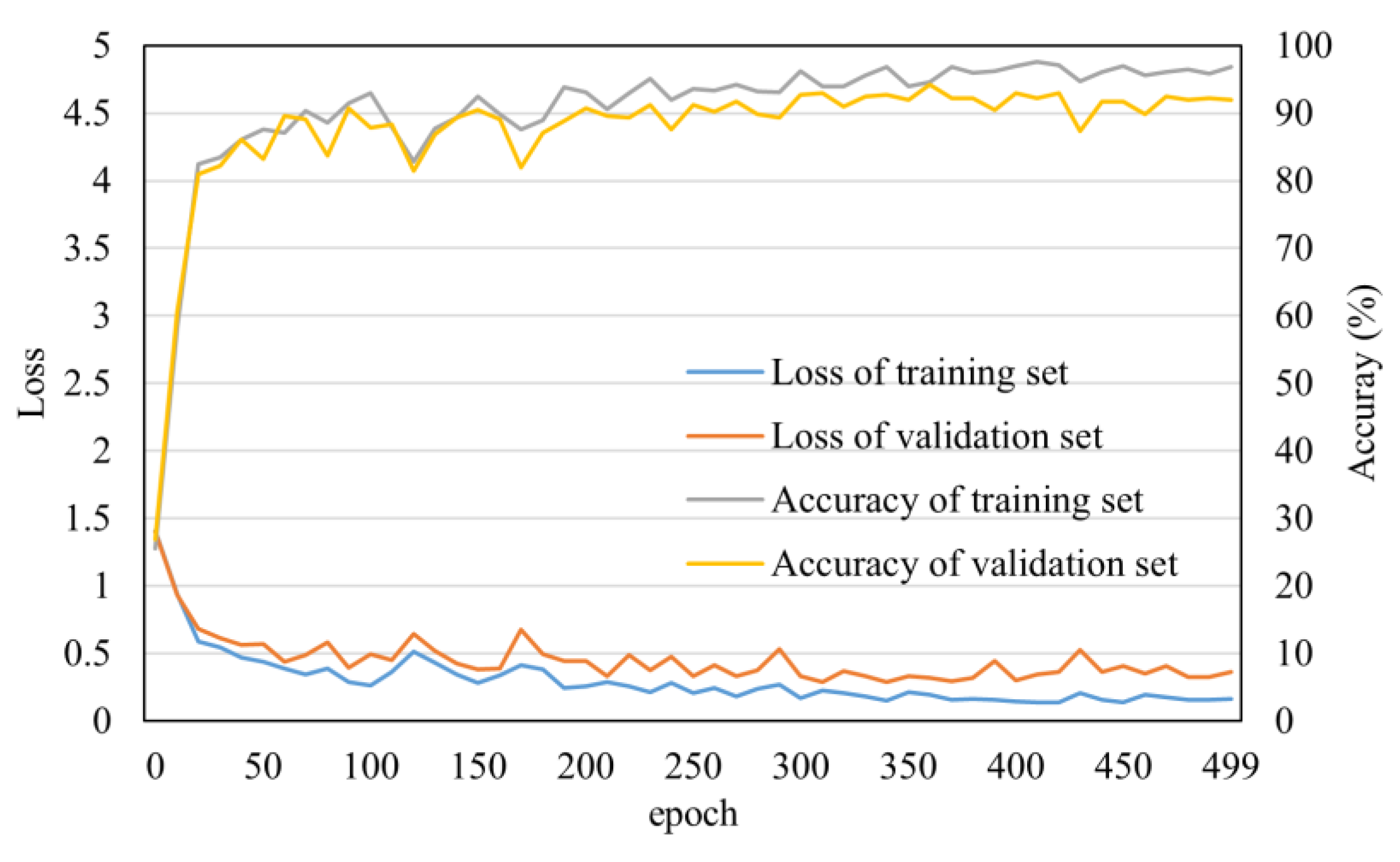

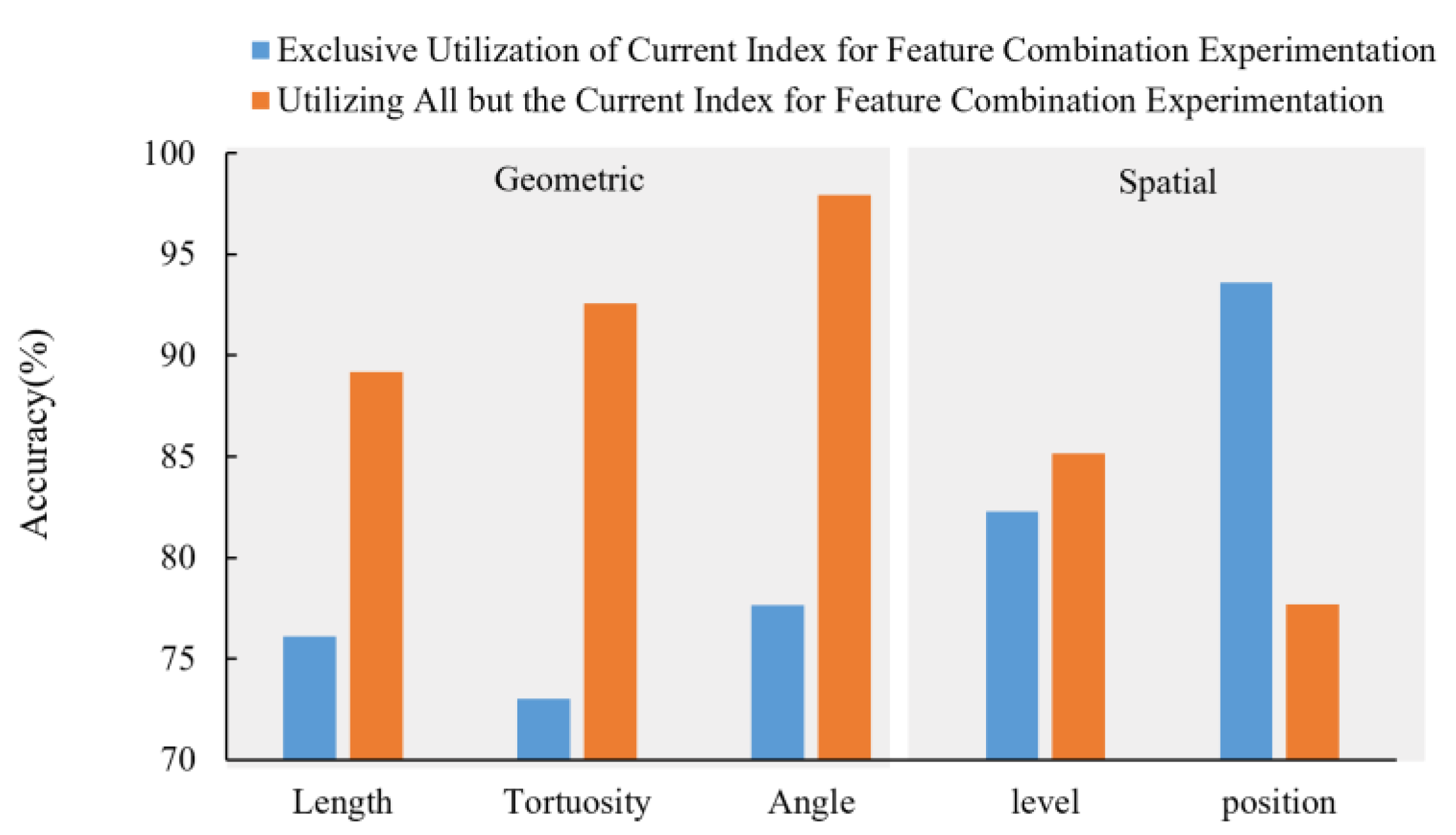
| Categories of Indices | Characteristics | Method of Calculation or Representation | Note |
|---|---|---|---|
| Geometric indices | Length | Node properties, the length of river reach | |
| Sinuosity | The degree of bend in the reach | ||
| Confluence angle | θ | Edge attribute, angle between reach and upstream reach | |
| Spatial indices | Stream ordering | — | Node properties, encoded using Strahler ordering |
| Left and right position identification | Node attribute, relative to the left and right position of the downstream stream |
| Predicted Class | Trellis | Dendritic | Comb-Like | Fan-Like | |
|---|---|---|---|---|---|
| Actual Class | |||||
| Trellis | 88 | 4 | 2 | 6 | |
| Dendritic | 0 | 100 | 0 | 0 | |
| Comb-like | 0 | 0 | 98 | 2 | |
| Fan-like | 1 | 0 | 3 | 96 | |
| No. | Thumbnail | Label | Predicted Label | Correct or Wrong | Prediction for Different Types of Probabilities | |||
|---|---|---|---|---|---|---|---|---|
| Dendritic | Trellis | Comb-Like | Fan-Like | |||||
| 1 |  | Dendritic | Dendritic | T | 0.9968 | 0.0032 | 0.0000 | 0.0000 |
| 2 |  | Dendritic | Dendritic | T | 0.9972 | 0.0028 | 0.0000 | 0.0000 |
| 3 |  | Dendritic | Dendritic | T | 0.9920 | 0.0080 | 0.0000 | 0.0000 |
| 4 |  | Dendritic | Dendritic | T | 0.9937 | 0.0063 | 0.0000 | 0.0000 |
| 5 |  | Dendritic | Dendritic | T | 0.9949 | 0.0016 | 0.0000 | 0.0035 |
| 6 |  | Trellis | Trellis | T | 0.0002 | 0.9997 | 0.0000 | 0.0000 |
| 7 |  | Trellis | Trellis | T | 0.0015 | 0.9969 | 0.0000 | 0.0016 |
| 8 |  | Trellis | Fan-like | F | 0.0033 | 0.0478 | 0.0312 | 0.9178 |
| 9 |  | Trellis | Comb-like | F | 0.0000 | 0.0045 | 0.9936 | 0.0020 |
| 10 |  | Trellis | Dendritic | F | 0.7941 | 0.2056 | 0.0000 | 0.0004 |
| 11 |  | Comb-like | Comb-like | T | 0.0000 | 0.0000 | 1.0000 | 0.0000 |
| 12 |  | Comb-like | Comb-like | T | 0.0000 | 0.0000 | 1.0000 | 0.0000 |
| 13 |  | Comb-like | Comb-like | T | 0.0000 | 0.0000 | 1.0000 | 0.0000 |
| 14 |  | Comb-like | Fan-like | F | 0.0013 | 0.0478 | 0.2817 | 0.6693 |
| 15 |  | Comb-like | Fan-like | F | 0.0001 | 0.0127 | 0.0032 | 0.9841 |
| 16 |  | Fan-like | Fan-like | T | 0.0000 | 0.0005 | 0.0003 | 0.9992 |
| 17 |  | Fan-like | Fan-like | T | 0.0000 | 0.0000 | 0.0000 | 1.0000 |
| 18 |  | Fan-like | Fan-like | T | 0.0057 | 0.1008 | 0.0011 | 0.8924 |
| 19 |  | Fan-like | Comb-like | F | 0.0003 | 0.0506 | 0.8716 | 0.0775 |
| 20 |  | Fan-like | Trellis | F | 0.0337 | 0.5595 | 0.0012 | 0.4056 |
Disclaimer/Publisher’s Note: The statements, opinions and data contained in all publications are solely those of the individual author(s) and contributor(s) and not of MDPI and/or the editor(s). MDPI and/or the editor(s) disclaim responsibility for any injury to people or property resulting from any ideas, methods, instructions or products referred to in the content. |
© 2023 by the authors. Licensee MDPI, Basel, Switzerland. This article is an open access article distributed under the terms and conditions of the Creative Commons Attribution (CC BY) license (https://creativecommons.org/licenses/by/4.0/).
Share and Cite
Xu, X.; Liu, P.; Guo, M. Drainage Pattern Recognition of River Network Based on Graph Convolutional Neural Network. ISPRS Int. J. Geo-Inf. 2023, 12, 253. https://doi.org/10.3390/ijgi12070253
Xu X, Liu P, Guo M. Drainage Pattern Recognition of River Network Based on Graph Convolutional Neural Network. ISPRS International Journal of Geo-Information. 2023; 12(7):253. https://doi.org/10.3390/ijgi12070253
Chicago/Turabian StyleXu, Xiaofeng, Pengcheng Liu, and Mingwu Guo. 2023. "Drainage Pattern Recognition of River Network Based on Graph Convolutional Neural Network" ISPRS International Journal of Geo-Information 12, no. 7: 253. https://doi.org/10.3390/ijgi12070253
APA StyleXu, X., Liu, P., & Guo, M. (2023). Drainage Pattern Recognition of River Network Based on Graph Convolutional Neural Network. ISPRS International Journal of Geo-Information, 12(7), 253. https://doi.org/10.3390/ijgi12070253






